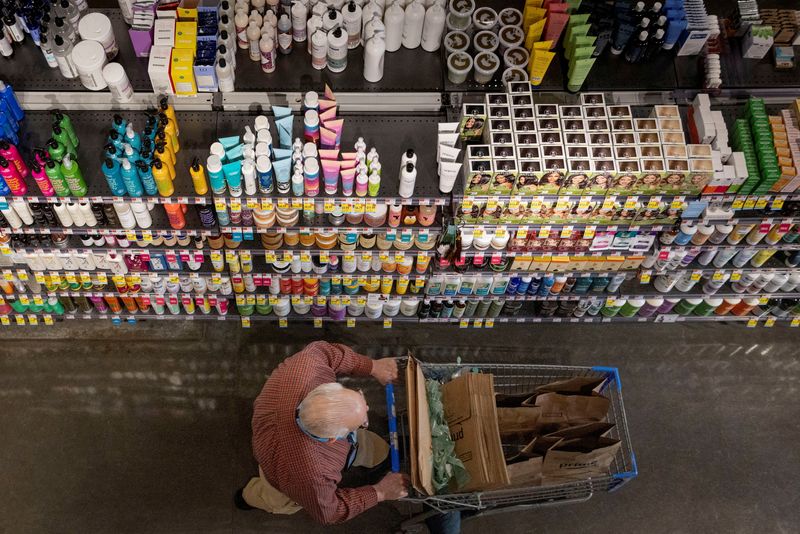(Reuters) - U.S. consumers' inflation expectations one year from now worsened in May but there they were still generally bullish about the strength of the labor market, underscoring the imbalances facing the U.S. Federal Reserve this week as it grapples with how to rein in price pressures.
Median expectations for where inflation will be in one year rose 0.3 percentage point to 6.6%, while they remained unchanged at 3.9% over a three-year outlook, the survey released by the Federal Reserve Bank of New York on Monday showed. Uncertainty on where inflation will end up over that medium term rose to a series high.
A worse-than-expected key inflation reading last Friday, which detailed broadening price pressures, has caused investors to up their bets the U.S. central bank will have to be more aggressive to crush inflation that has remained around a 40-year high for months.
Fed policymakers are expected on Wednesday to raise borrowing costs by half a percentage point to a range of between 1.25% and 1.50% as it seeks to cool demand across the economy without causing a spike in unemployment.
Americans are already changing their spending habits and there are increasing fears of either an outright recession or period of very slow growth as the Fed is forced to raise interest rates more quickly and higher than expected.
Median household spending growth expectations jumped to 9.0%, a rise of one percentage point and a record high for the series while the average perceived probability of missing a minimum debt repayment over the next three months rose by 0.4 percentage point to 11.1% in May.
However, while unemployment expectations increased for the third consecutive month in May to their highest level since February 2021, the mean perceived probability of losing one's job remained well below last year's average and the mean probability of quitting one's job over the next year rose to 20.3% in May from 19.0% the prior month to the highest level since September 2020. A high quits rate is seen as reflecting worker confidence in the labor market.

Indeed, the mean perceived probability of finding a new job rose to its highest level in more than two years. The increase was driven by those over 40, those without a college education and those with household incomes of less than $50,000.
The internet-based survey taps a rotating panel of 1,300 households and is structured so that a roughly equal amount of data are collected every week of the month.